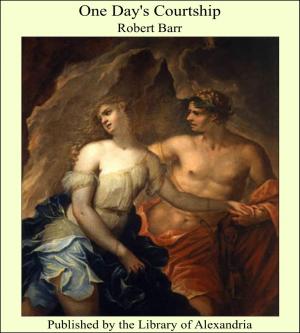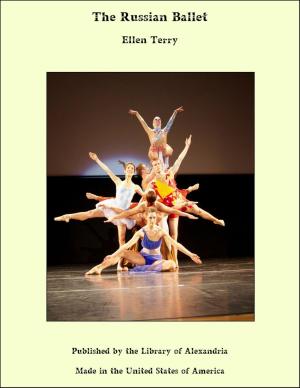| Author: | Edward Frederic Benson | ISBN: | 9781465619976 |
| Publisher: | Library of Alexandria | Publication: | March 8, 2015 |
| Imprint: | Language: | English |
| Author: | Edward Frederic Benson |
| ISBN: | 9781465619976 |
| Publisher: | Library of Alexandria |
| Publication: | March 8, 2015 |
| Imprint: | |
| Language: | English |
The transference of emotion is a phenomenon so common, so constantly witnessed, that mankind in general have long ceased to be conscious of its existence, as a thing worth our wonder or consideration, regarding it as being as natural and commonplace as the transference of things that act by the ascertained laws of matter. Nobody, for instance, is surprised, if when the room is too hot, the opening of a window causes the cold fresh air of outside to be transferred into the room, and in the same way no one is surprised when into the same room, perhaps, which we will imagine as being peopled with dull and gloomy persons, there enters some one of fresh and sunny mind, who instantly brings into the stuffy mental atmosphere a change analogous to that of the opened windows. Exactly how this infection is conveyed we do not know; considering the wireless wonders (that act by material laws) which are already beginning to lose their wonder now that we have our newspaper brought as a matter of course every morning in mid-Atlantic, it would not perhaps be rash to conjecture that in some subtle and occult way the transference of emotion is in reality material too. Certainly (to take another instance) the sight of definitely material things, like writing on a page, conveys emotion apparently direct to our minds, as when our pleasure or pity is stirred by a book, and it is therefore possible that mind may act on mind by means as material as that. Occasionally, however, we come across phenomena which, though they may easily be as material as any of these things, are rarer, and therefore more astounding. Some people call them ghosts, some conjuring tricks, and some nonsense. It seems simpler to group them under the head of transferred emotions, and they may appeal to any of the senses. Some ghosts are seen, some heard, some felt, and though I know of no instance of a ghost being tasted, yet it will seem in the following pages that these occult phenomena may appeal at any rate to the senses that perceive heat, cold, or smell. For, to take the analogy of wireless telegraphy, we are all of us probably “receivers” to some extent, and catch now and then a message or part of a message that the eternal waves of emotion are ceaselessly shouting aloud to those who have ears to hear, and materialising themselves for those who have eyes to see. Not being, as a rule, perfectly tuned, we grasp but pieces and fragments of such messages, a few coherent words it may be, or a few words which seem to have no sense. The following story, however, to my mind, is interesting, because it shows how different pieces of what no doubt was one message were received and recorded by several different people simultaneously. Ten years have elapsed since the events recorded took place, but they were written down at the time.
The transference of emotion is a phenomenon so common, so constantly witnessed, that mankind in general have long ceased to be conscious of its existence, as a thing worth our wonder or consideration, regarding it as being as natural and commonplace as the transference of things that act by the ascertained laws of matter. Nobody, for instance, is surprised, if when the room is too hot, the opening of a window causes the cold fresh air of outside to be transferred into the room, and in the same way no one is surprised when into the same room, perhaps, which we will imagine as being peopled with dull and gloomy persons, there enters some one of fresh and sunny mind, who instantly brings into the stuffy mental atmosphere a change analogous to that of the opened windows. Exactly how this infection is conveyed we do not know; considering the wireless wonders (that act by material laws) which are already beginning to lose their wonder now that we have our newspaper brought as a matter of course every morning in mid-Atlantic, it would not perhaps be rash to conjecture that in some subtle and occult way the transference of emotion is in reality material too. Certainly (to take another instance) the sight of definitely material things, like writing on a page, conveys emotion apparently direct to our minds, as when our pleasure or pity is stirred by a book, and it is therefore possible that mind may act on mind by means as material as that. Occasionally, however, we come across phenomena which, though they may easily be as material as any of these things, are rarer, and therefore more astounding. Some people call them ghosts, some conjuring tricks, and some nonsense. It seems simpler to group them under the head of transferred emotions, and they may appeal to any of the senses. Some ghosts are seen, some heard, some felt, and though I know of no instance of a ghost being tasted, yet it will seem in the following pages that these occult phenomena may appeal at any rate to the senses that perceive heat, cold, or smell. For, to take the analogy of wireless telegraphy, we are all of us probably “receivers” to some extent, and catch now and then a message or part of a message that the eternal waves of emotion are ceaselessly shouting aloud to those who have ears to hear, and materialising themselves for those who have eyes to see. Not being, as a rule, perfectly tuned, we grasp but pieces and fragments of such messages, a few coherent words it may be, or a few words which seem to have no sense. The following story, however, to my mind, is interesting, because it shows how different pieces of what no doubt was one message were received and recorded by several different people simultaneously. Ten years have elapsed since the events recorded took place, but they were written down at the time.















